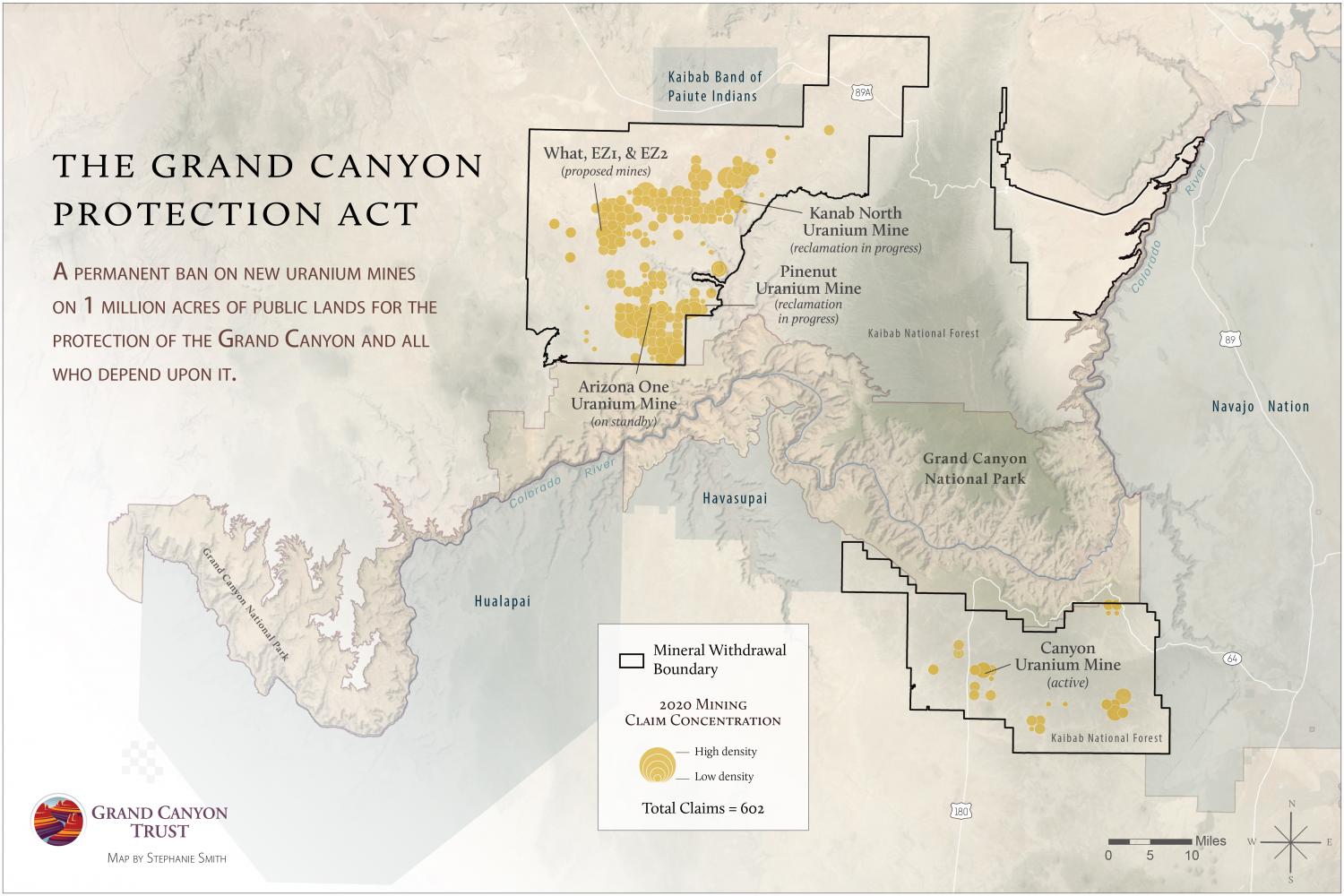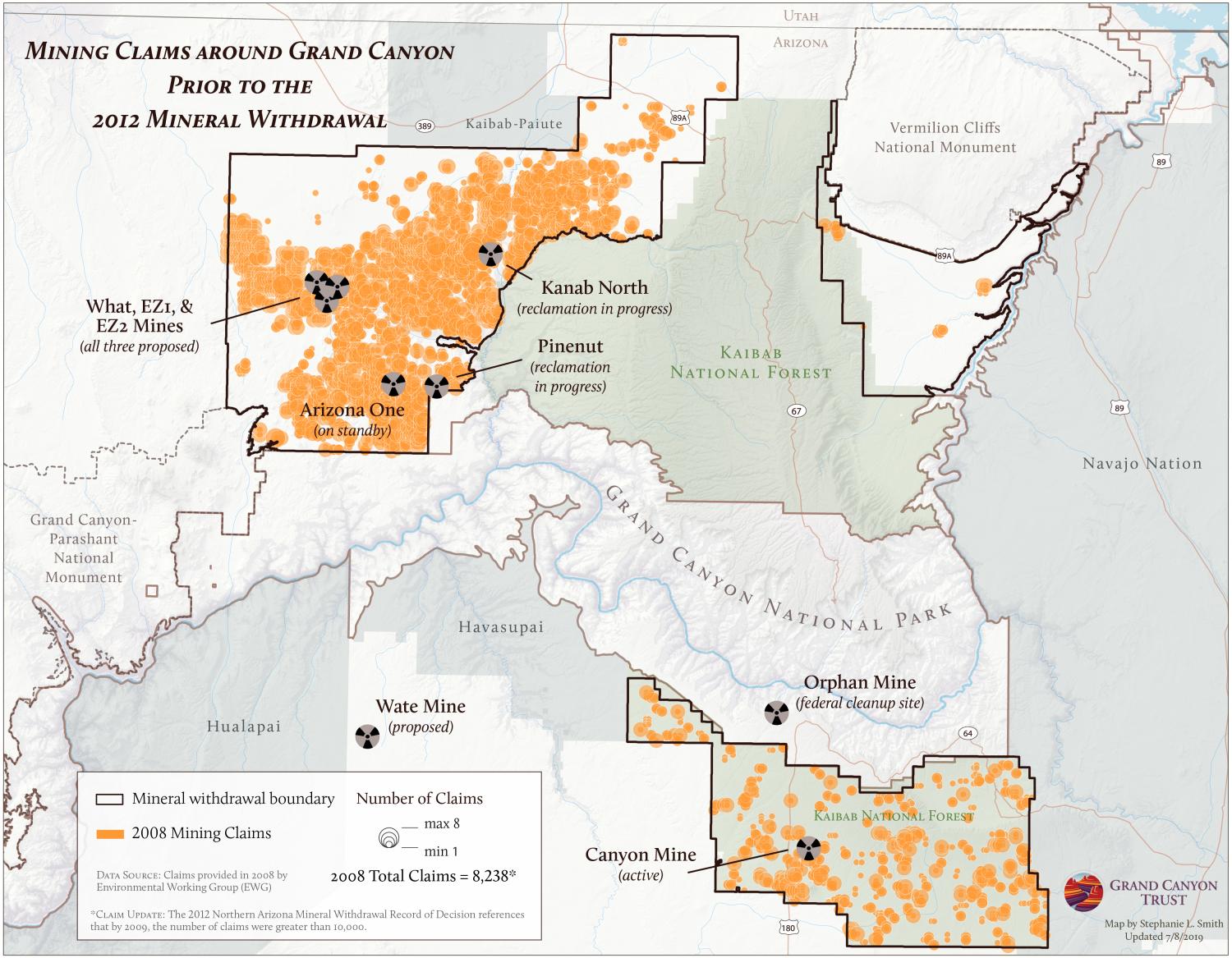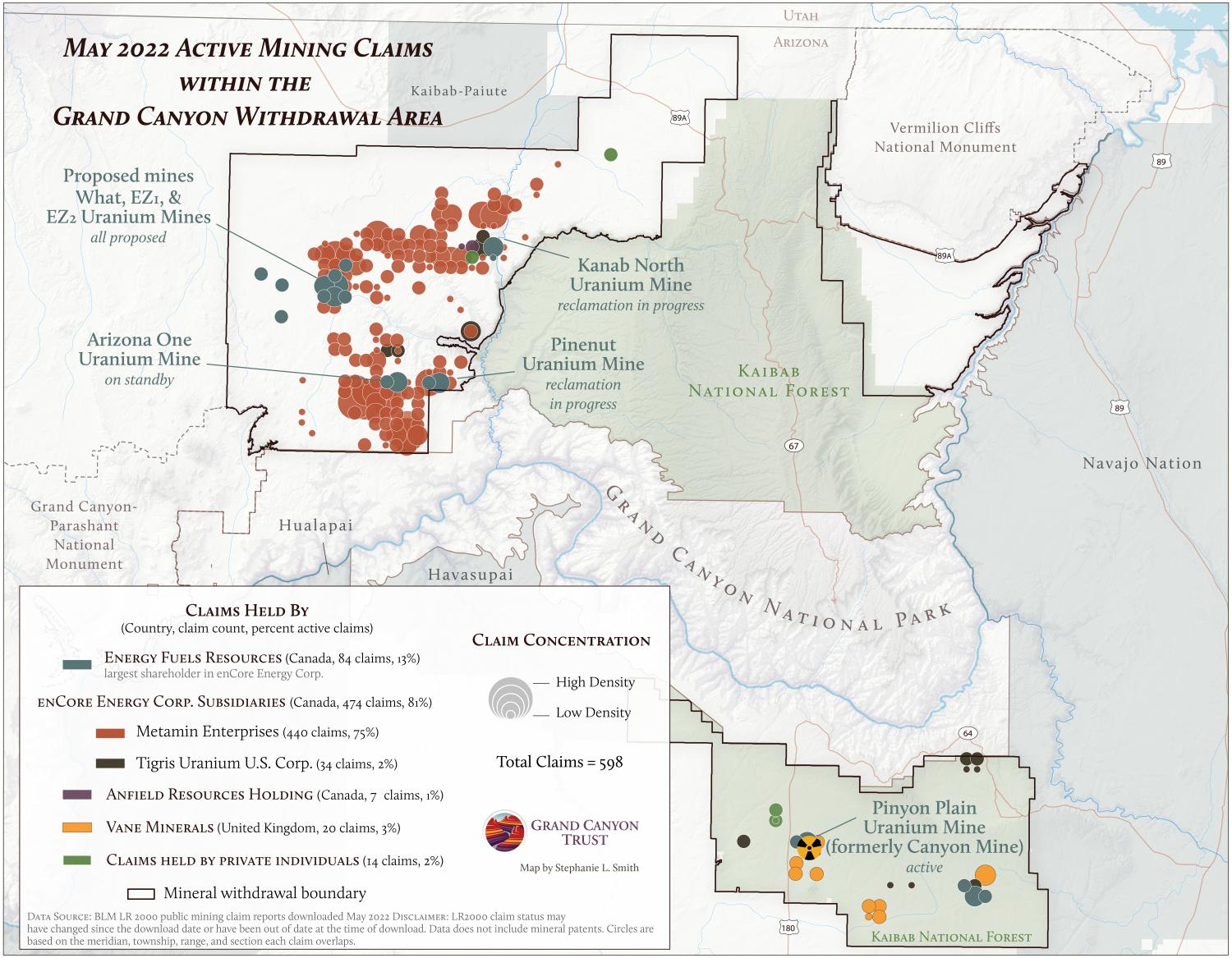FOR IMMEDIATE RELEASE
FLAGSTAFF, AZ — A new poll released yesterday shows a strong bipartisan desire among Arizona voters to make the current temporary ban on new uranium mining on public lands near Grand Canyon National Park permanent. The survey, conducted by independent polling and opinion research firm GQR, also found that voters support the Grand Canyon Protection Act, a bill to permanently ban new uranium mines on about 1 million acres of public lands near the Grand Canyon, by a more than four-to-one margin.
"Almost 90 percent of Democrats...almost 70 percent of Independents...almost 50 percent of Republicans support making this ban permanent," explained Anna Greenberg, senior partner at GQR. More than twice as many Republicans support the ban than oppose it. Overall, only 15 percent of Arizona voters oppose a permanent ban.
According to the poll, voters across the state support a permanent Grand Canyon mining ban in order to protect Arizona’s clean water supply, tourism economy, and public health, given the devastating impacts of uranium mining on Indigenous people, especially on the Navajo Nation. At least 11 tribes maintain strong cultural connections to the Grand Canyon.
"Here on the Navajo Nation, over 500 open uranium mines are still being cleaned up. And the cancer rates are high...that’s probably why you see bipartisan support for this ban," Navajo Nation President Jonathan Nez said during a press conference yesterday. "We really, truly advocate that uranium not be extracted from in and around our homelands, including the Navajo Nation," Nez added. "The health effects from uranium going into the water table and our animals drinking from that — and then we consume those animals — it’s a devastating effect and I’m sure the reason why the poll saw a large number of people wanting a ban is because of the health effects that come from uranium mining."
GRAND CANYON POLL: View a summary and a slide deck detailing the results ›
"The results of the poll are an unambiguous directive straight from Arizonans to both political parties in Congress. It’s past time to permanently ban new uranium mining here in the Grand Canyon, and in the region," said Rep. Raúl Grijalva, D-AZ, who introduced the Grand Canyon Protection Act in the House. "As we’ve seen this year, industry will use any excuse, whether it’s the war in Ukraine or the clean energy transition, to say that we need to open up every inch of public land to mining, and, open up the Grand Canyon to uranium mining," Grijalva continued. "But Arizonans and the American people know better. While we know that mining will need to happen in some places, and it needs to happen in a responsible and sustainable way, we also know that there are some places where it shouldn’t happen at all. And the Grand Canyon is one of those places."
The Havasupai Tribe has opposed uranium mining on ancestral lands in the Grand Canyon region since the 1980s. "Many people don’t realize that the water that trickles down into Havasupai comes from the Grand Canyon region," observed Stuart Chavez, a member of the Havasupai Tribal Council. "There are many people that benefit from the water that trickles through the Grand Canyon. And so it’s important for everyone to understand that the Havasupai people are not only speaking just for themselves, but also for all the people that benefit from the Colorado River’s water. Uranium mining needs to be stopped in the Grand Canyon," Chavez concluded.
"Even though we are a small tribe, we’ve been consistent on trying to protect our waters," added Havasupai tribal leader Carletta Tilousi, "because of the fact that there’s an active [uranium mine], Pinyon Plain Mine, right near our sacred mountain — Red Butte — we feel that there has already been contamination there and destruction of our sacred mountain. It’s three miles from Pinyon Plain Mine and we’re very concerned...We just want clean water. We just want a clean place to live. Our small tribe, we just want to be left alone. We just want to live in peace. And not be out there like this, begging for our lives and begging for clean water."
Although the Pinyon Plain Mine (formerly Canyon Mine) has been exempted from the temporary ban and wouldn’t be directly affected by a permanent mining ban, opponents of mining near the Grand Canyon view the mine as another example of why uranium mining must be stopped in the region more broadly. The fact that Pinyon Plain Mine is allowed to operate despite the opposition of the Havasupai Tribe and despite serious hydrological uncertainties and environmental risks increases concerns that uranium mining cannot be done safely near the Grand Canyon. Opposition to uranium mining in the region is widespread; tribes, local governments, business owners, and hunters and anglers actively oppose mining near the Grand Canyon.
"The Arizona Wildlife Federation respects and supports the Havasupai and Navajo tribes in pursuit of permanent protection for this iconic region," said Scott Garlid, executive director of the Arizona Wildlife Federation. "We also support multi-use public lands. We’re not anti-mining," Garlid explained. "But in this case, in this place, whether you think of it from the standpoint of the tribes, the standpoint of the wildlife, the standpoint of the water, or the standpoint of the economy, uranium mining just doesn’t make sense."
Despite industry pressure to mine, uranium reserves in the Grand Canyon region are modest and relatively low grade.
"Anyone who claims that we need to be able to mine for uranium near the Grand Canyon in order to be independent of Russian is, at best, exaggerating the uranium potential of this region and, possibly, only seizing on a geopolitical crisis to benefit their own bottom line," said Amber Reimondo, energy director at the Grand Canyon Trust. "Just 0.2 percent of identified uranium resource areas in the U.S. are found within the mining ban boundaries...It’s not rocket science that the Grand Canyon region is no place for mining uranium and it’s clear that the majority of Arizona voters who identify as Democrats, Republicans, and Independents, agree."
Photos and maps free for media use ›
Background
The Grand Canyon Protection Act, introduced by Rep. Raúl Grijalva, D-AZ, has repeatedly passed the House, most recently in July 2022, as part of the National Defense Authorization Act. Arizona senators Mark Kelly and Kyrsten Sinema introduced a Senate version of the bill in early 2021. The Senate Committee on Energy and Natural Resources gave the bill a markup on July 28, 2022 where it received a 10-10 vote along party lines, the farthest the legislation has ever advanced in the Senate. Next, it must be brought to the Senate floor for a vote, or rolled into a larger legislative package.
ABOUT THE BILLS
H.B. 1052, the House version of the Grand Canyon Protection Act ›
S. 387, the Senate version of the Grand Canyon Protection Act ›
The bill is strongly supported by tribes, U.S. government agencies, sportsmen, business owners, and others.
Maps
The Grand Canyon Protection Act proposes a permanent ban on new uranium mines on about 1 million acres of public lands in the Grand Canyon region.
In 2008, there were over 8,000 mining claims on public lands surrounding Grand Canyon National Park. According to the 2012 Northern Arizona Mineral Withdrawal Record of Decision, which banned new mining claims on about 1 million acres of public land surrounding the park for a period of 20 years, there were over 10,000 mining claims on these lands in 2009.
The map below shows active mining claims within the Grand Canyon mining ban area. It was produced using data from the BLM LR2000 Land and Mineral Systems Report, downloaded in May 2022.




